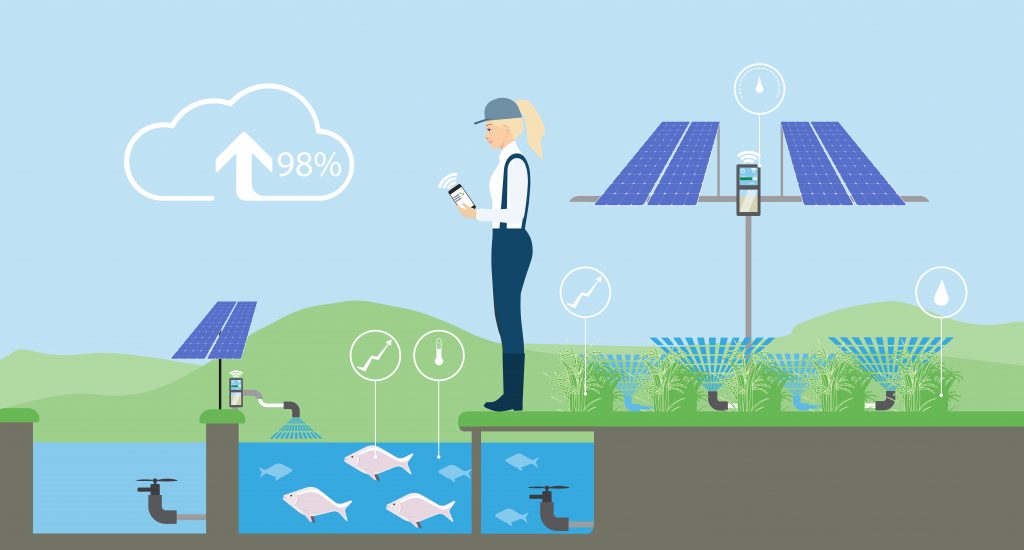A forward-looking integration of recirculating aquaculture and hydroponics
Aquaponics is a bio-integrated system that combines aquaculture (raising fish) and hydroponics (the soil-less growing of plants). The waste products of one biological system serve as nutrients for the second biological system. The fish waste provides an organic food source for the plants, and the plants naturally filter the water for the fish. An important role in that system are playing the nitrifying bacteria. These bacteria are breaking down the system’s by-products into nitrites and subsequently into nitrates. Nitrates are the form of nitrogen that plants can uptake and use to grow. Aquaponics is a totally sustainable food production system that imitates a natural ecosystem. Aquaponic systems can produce food practically anywhere without any size or budget limitations; outdoors, indoors, in a greenhouse, even in someone’s living room.
The most common combination of plants-fish is the lettuce-tilapia one. Tilapias are the most popular species to grow in aquaponics systems worldwide thanks to the below characteristics. They are a freshwater species with tolerance to temperature extremes (14 – 36 °C) and resistant to many parasites and pathogens. However, a free of parasites environment and an optimal temperature range is (27–30 °C) recommended for ensuring good growth rates. As well, tilapias are omnivorous, that means that they can eat both plant- and animal- based feed. Also, it is one of the a few species that they can be cultured in high densities. High densities are suggested in the grow out tanks, because of male aggression in low densities. On the other hand, lettuce is one of the leafy crops that is benefited from the aquaponic raft systems due to the high nitrogen content in the water. Lettuce thrives under the low in phosphorus and potassium conditions of the aquaponics system. Harvesting can start 40-50 days after planting and it is easy to maintain a continuous production. According to Rahmatullah et al. (2010), the optimal density of tilapia is 106 fish/m3 results in the best growth rate, food conversion ratio, survival rate and production. Although, the optimal stocking densities for each farm and the final fish-plant production depend on different parameters. The number of the fish affects the plant production. Another restricted-parameter is the space availability. So, every farmer, according to the facilities’ size, should estimate the maximum number of fish and plants production.
But are Aquaponics just a new trend for amateurs or the future of integrated fish farming? A general conclusion of various experimental and/or economical researches is that aquaponic farms can be profitable and economically feasible. The introduction of aquaponics can diversify the farmers’ sources of income, yield savings in the water purification and fertilizer costs, and result in higher outputs of fish and plant. Each farm size can have positive economical returns. Nevertheless, larger systems have higher return than the smaller ones. One common disadvantages of aquaponics is the higher investment and operating costs and the lower production comparing to other more traditional farming practices. Another challenge for the farmers is that the economic outcome is sensitive to the retail prices. However, there are some tips that could potentially overcome these challenges. Firstly, it is necessary a good financial planning and risk management from the part of the grower. And secondly, there is a need to focus on the consumer perception of aquaponic products as organic and the willingness to pay more for its added value. Finally, the economic outcome will be significantly increased if the grower combines the production of tilapia with more valuable plants, such as medical cannabis. In Canada already exists a company that produces medical cannabis in aquaponic systems. The owners of the company estimate 15,000-20,000 kilograms of annual output after the company’s ongoing expansion. This production will be resulted to an annual income of 140470.66€ (7.02 €/gr), only from the cannabis sales.


